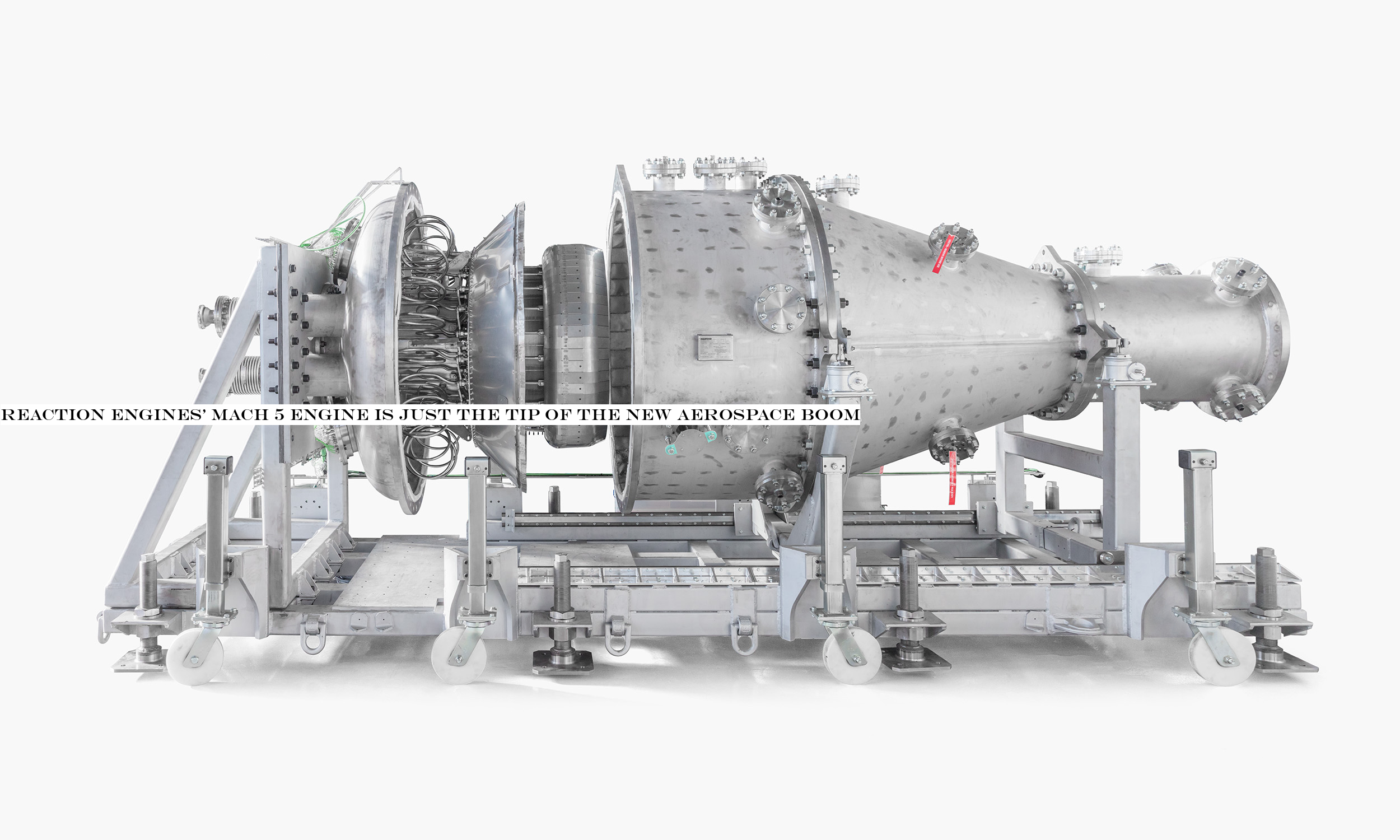Technology

Software development companies tackling services for niche industries, like commercial real estate subcontracting, continue to find Los Angeles to be fertile ground for development.
The latest company to raise funding from a clutch of investors is BuildOps, which raised $5.8 million in seed financing from some big names in the Los Angeles tech ecosystem.
Led by Fika Ventures, with additional investments from MetaProp VC, Global Founders Capital, CrossCut Ventures, TenOneTen, IGSB, 1984 Ventures, L2 Ventures, GroundUp, NBA all-star Metta World Peace, Oberndorf Enterprises, Wolfson Group and scouts from Sequoia Capital, the new financing will be used to support the companycontinued growth.
BuildOps sells software that integrates scheduling, dispatching, inventory management, contracts, workflow and accounting into a single software package for commercial real estate contractors with staff ranging from a few dozen to several hundred employees.
Software for the service industry is nothing new for Los Angeles entrepreneurs. The unicorn ServiceTitan hails from the greater Los Angeles area and a number of other software as a service businesses are calling the greater Los Angeles area home.
Ithard to argue with the size of the commercial construction market. Over the past three years, commercial construction spending grew from $626 billion to $807 billion, according to data provided by the company. And while most large vendors — architects, general contractors and property management companies — have some project management software, the fragmented group of subcontractors that provide services to those customers has remained resistant to adopting new technologies, the company said.
The firm was co-founded by former ServiceTitan developer Neeraj Mittal; Microsoft, Nextag, Swurv and Fundly former executive Steve Chew; and Alok Chanani, who previously founded a commercial real estate company and was a former commander of a transportation unit of the Army in Iraq.
&At BuildOps, we are on a mission to bring a true all-in-one solution on the latest technology to the people who keep Americahospitals, power plants and commercial real estate running. We are privileged to be working closely with some of the countrytop commercial contractors,& said Chanani.
That sentiment is echoed by Liquid 2 Ventures managing partner and former National Football League superstar, Joe Montana .
&Liquid 2 Ventures has an investment thesis in supporting Americaworking class and I just love the idea of making their lives far easier and better. You have one solution that does it all and talks seamlessly to every single part of their business from parts to ordering to inventory and more,& said Montana in a statement. &There are very few world-class technology solutions for commercial subcontractors like this and we believe in the founders.&
- Details
- Category: Technology
Read more: Los Angeles-based BuildOps, subcontracting software for real estate, raises $5.8 million
Write comment (92 Comments)If you work for someone else, you likely know the drill: in comes that annual email reminding you that ittime for unconscious bias or sexual harassment training, and if you could please finish up this mandatory module by this date, that would be terrific.
The email — not to mention the programming itself — is straight out of &Office Space.& Little surprise that when Anne Solmssen, a Harvard-trained computer scientist, happened to call a friend recently who was clicking through his own company-sponsored training program, his answer to how it was going was, &Itmore interesting when I have baseball on.&
Solmssen has some other ideas about how to make sexual harassment training far more interesting and less &cringe-worthy.& Indeed, she recently joined forces with Roxanne Petraeus, another Harvard grad, to create Ethena, a software-as-a-service startup thatpromising customizable training delivered in bite-size segments that caters to individuals based on how much they already know about sexual harassment in the workplace. The software will also be sector-specific when itreleased more widely in the first quarter of next year.
The company first came together this past summer led by Petraeus, who joined the U.S. Reserve Officers& Training Corps to help defray the cost of her Ivy League education and wound up spending seven years in the U.S. Army, including as a civil affairs officer, before co-founding an online meals marketplace, then spending a year with McKinsey - Co. to get a better handle on how businesses are run.
Petraeus says that across her experience, and particularly in the Army, she had &great leaders& who were &thoughtful about their [reports&] development goals and what was happening in their personal lives, and brought out the best in their people, rather than making them feel less than or marginalized.&
Still, she was aware that from an institutional standpoint, most harassment training is not thoughtful, that ita matter of checking boxes on an annual basis to ensure compliance with different state laws, depending on where an organization is headquartered. She marveled that so much of the content employees are consuming seems &designed for a 1980s law firm.&
Solmssen was meanwhile working for a venture-backed public safety software company, Mark43. She was getting along just fine, too, but when a friend put the two in touch on the hunch that their engineering talent and vision could amount to something, that instinct proved right. &I wasn&t particularly interested in starting a business,& Solmssen says. &But I fell in love with Roxanne and this idea.&
So how is what they&re building different than whatcurrently available? In lots of ways, seemingly. For starters, Ethena doesn&t want employees to &knock it out all at once& in an hour or two of training at the end of each year. Instead, itcreating what it calls monthly &nudges& that deliver relevant studies and questions — information that can then be used in an all-hands meeting, for example, helping to reinforce its goals.
Italso focused on sending content and questions to people thatiterative and that evolves based on how an individual responds. A new hire might answer very differently than a sponsor of other women within an organization, for example. Ita stark contrast to to the black-and-white scenarios that every employee is typically presented. (Think: &Judy and Brian go to a bar after work.&)
These subtleties are a significant development, argues Petraeus, because &traditional training implicitly tells employees that spending time together outside of work is bad for mentorship. Itwhy you hear questions like, ‘I just hired my first female analyst; can I get into an Uber with her when we&re traveling?'& Turning every mixed-gender occasion into a potential minefield is ¬ the message we should be conveying.&
Yet ita message thatbeing absorbed. According to a survey conducted earlier this year by LeanIn.Org and SurveyMonkey, 60% of managers who are men are now uncomfortable participating in a common work activity with a woman, such as mentoring, working alone or socializing together. Thata 32% jump from a year ago.
According to that same survey, senior-level men are now 12 times more hesitant to have one-on-one meetings with junior women, nine times more hesitant to travel together and six times more hesitant to have work dinners together.
Even the U.S. Equal Employment Opportunity Commission thinks sexual harassment training has gone wrong somewhere, noting that it hasn&t worked as a prevention tool in part because itbeen too focused on simply avoiding legal liability. In fact, a few years ago, a task force studying harassment in the workplace on behalf of the EEOC concluded that &effective training cannot occur in a vacuum & it must be part of a holistic culture of non-harassment that starts at the top.& Similarly, it added, &one size does not fit all: training is most effective when tailored to the specific workforce and workplace and different cohorts of employees.&
Toward that end — and with compliance in mind — Ethena is also modernizing the content it delivers, including as it pertains to dating at work, which definitely happens; and inclusivity around pregnant colleagues, who are quietly marginalized; and transgender colleagues, who can also find themselves feeling either misunderstood or overlooked by current sexual harassment training materials.
Therealso a heavy focus on analytics. If 60% of employees don&t know about a companypolicies around office dating, for example, or employees in an outfitmarketing department appear to know less about an organizationvalues than other departments, Ethena will flag these things so managers can take preventative action. (&Say therea new manager in the LA office where employees seem to be answering less consistently,& suggests Solmssen. &We can provide additional training to get that person up to speed.&)
For Petraeus — who is the daughter-in-law of retired general and former CIA director David Petraeus — the overarching goal is to kill off mandatory yearly training where the takeaway for many employees, the fundamental standard, is, &Can I go to jail for this comment?&
Ittoo soon to say if Ethena will be successful. Itonly halfway through a pilot training program at the moment. But Solmssen and Petraeus are strong pitchmen, and they say their software will be available beginning in the first quarter of next year for $4 per employee per month, which is on a par with other e-learning programs.
The startup has also won the support of early backers who&ve already given the months-old outfit $850,000 to start hiring. Among those investors: Neo, a venture fund started last year by serial entrepreneur Ali Partovi; Village Global; and Jane VC, which is a fund focused on women-led startups.
Numerous angel investors have also written Ethena a check, including Reshma Saujani, who is the founder of the organization Girls Who Code, and a handful of military veterans.
As for the last group, &they&re not a group thattypically represented in startup ventures,& observes Petraeus, &but in terms of leadership and thinking about how to get a diverse team oriented around the same goal,& they&re hard to match.
- Details
- Category: Technology
Imagine a hypersonic passenger aircraft that would cut the journey time between London and New York to around two hours. At Mach 5, orfive times the speed of sound, the aircraft wouldcomplete a trip across the Atlantic in around 120 minutes. Mach 5 is more than twice as fast as the cruising speed of Concorde and over 50% faster than the SR-71 Blackbird & the worldfastest jet-engine powered aircraft. A flight across the Pacific would take roughly three hours.Flight times from London to Sydney could be 80% shorter.Who needs Elon Musk?
Reaching these speeds would require an aircraft engine that has never previously existed. But last week, the world got a glimpse of a new future via a project which has been germinating for 30 years.
Reaction Engines was founded in 1989 by three propulsion engineers from Rolls Royce: Alan Bond, Richard Varvill and John Scott Scott. Their idea was that in order for an engine to reach hypersonic speeds, the air going into it would have to be rapidly cooled, otherwise the engine would melt. Reactionbreakthrough was inventing a &precooler& or heat exchanger which can take the air down to minus 150 degrees centigrade in less than a 20th of a second.
These ultra-lightweight &heat exchangers& would enable aircraft to fly over five times the speed of sound in the atmosphere. Thus the SABRE & Synergetic Air-Breathing Rocket Engine & was born. The Sabre engine &breathes& air to make 20 per cent of the journey to orbit, before switching to rocket mode to complete the trip.
Last week, Reaction Engines passed a significant milestone. It successfully tested its innovative precooler at airflow temperature conditions representing Mach 5.
The ground-based test at the Colorado Air and Space Port in the US, saw the precooler successfully operate at temperatures of 420ᵒC (~788ᵒF) & matching the thermal conditions corresponding to Mach 3.3 flight.

But this technology wouldn&t just be applicable to hypersonic flight. The precooler technology, developed by Reaction Engines, would significantly enhance the performance of existing jet engine technology, along with applications in automotive, aerospace, energy and industrial processes. Reaction Engines has attracted development funding from the British government, the U.S. Defense Advanced Research Projects Agency (DARPA) and the European Space Agency. Italso raised over £100m from public and private sources and has secured investment from BAE Systems, Rolls-Royce and Boeingventure capital arm HorizonX. Reaction is expected to start building and testing a demonstrator engine next year.
The success of Reaction Engines to date is a sign that the ‘AerospaceTech& sector is now booming. It is most certainly not alone.
Last month, Boeing and the UK government launched a £2m accelerator program to look for new innovations in this area. BoeingHorizonX is backing the initiative.
- Details
- Category: Technology
Read more: Reaction Engines’ Mach 5 engine is just the tip of the new aerospace boom
Write comment (99 Comments)The husband and wife co-founders behind the direct-to-consumer cookware and dinnerware startup retailer OurPlaceare big believers in the notion that the doorway to inclusive communities opens through the kitchen.
Amir Tehrani, the companyco-founder and chief executive spent, his life in the cookware and kitchen business, while his wife, Shiza Tehrani, is the co-founder of the Malala Fund, supporting educational initiatives for young women around the world, and Now Ventures, an impact seed investment fund based in Los Angeles.
The Los Angeles-based company is taking Shizabelief in social missions and the power of entrepreneurialism to transform communities, and Amirknowledge of the multibillion-dollar cookware and dinnerware business, to create a consumer-focused business that celebrates the culture surrounding cooking and uses it as a way to educate and inform — all while selling high-end pots, pans, plates and glasses to an audience of socially conscious consumers.
The project has received its initial capital from some pretty high-end backers. So far, the company has raised $2.35 million in financing from investors, including the venture arm of Los Angeles& startup retail giant, FabFitFun and Will SmithDreamers VC.

Two of the new products available from startup direct to consumer cookware and dinnerware brand OurPlace
The companyinitial line of dinnerware and cookware is manufactured in China and its glassware is manufactured in Thailand.
But the two executives have plans to source its future collections from artisans living in emerging markets around the world. &Our next collection is sourced from Oaxaca,& says Tehrani. &The Oaxaca line… itartisans making things out of their home. They&re making everything by hand and thereno sophisticated machinery to speak of.&
The challenge, says Amir Tehrani, is to help these artisans begin producing products at scale, while staying true to the artisanal nature of the products.
Ultimately, the idea is to educate and inform consumers about the cultural context behind the products they buy, according to the companytwo founders.
Therealso a financial incentive to launch a direct-to-consumer brand, the founders say. Itan industry that has yet to be disrupted by the technological innovations that have reshaped so many other retail markets, they say… and one thatequally as large as the mattress industry.
By 2021, the cookware and dinnerware market is projected to be $12.7 billion, according to a study by Freedonia Focus Reports. By comparison, mattresses are about a $14 billion market in the U.S.
And ita market that Amir Tehrani knows well. His grandfather founded TableTops Unlimited, one of the largest white-label suppliers of kitchenware, cookware and dinnerware in the U.S. That experience is what brought investors like FabFitFun to the table.
&They understand our capabilities around the family business and they want to help bring it to their community as well,& says Amir Tehrani. &Aside from what they were already doing around fashion and cosmetics the largest opportunity they weren&t already doing was around cookware.&
- Details
- Category: Technology

Google has been working on autonomous vehicles — one of the biggest challenges in AI — for more than a decade, but itlearning that the hardest part might just be getting people to enjoy the ride.
&This is an experience that you can&t really learn from someone else,& Waymo Director of Product Saswat Panigrahi told TechCrunch, while explaining the work he oversees around driverless development. &This is truly new.&
The sheer novelty of designing a UX (user experience) for driverless mobility has drawn Waymo away from hard science-based technologies where tech giants often feel most comfortable. In the place of data, sensor and neural net development, Waymo finds its driverless development gated by painstaking research into human factors and behavioral psychology. Despite making critical decisions to avoid delving into the mysteries of human behavior and interactions, Waymo is finding that such research is an unavoidable challenge on the road to driverless mobility.
&User research has always been a big part of the development process,& said Ryan Powell, the companyhead of UX Research and Design.
In 2012, when the Google Self-Driving Car program was &dogfooding& a highway-only driver assistance system called &AutoPilot,& its in-car cameras found that employees were over-relying on the limited automation in dangerous ways. As a result of videos showing Googlers putting on makeup, using multiple devices and even falling asleep while using the system that they&d been told required constant observation, the decision was made to cancel AutoPilot product plans and focus on fully autonomous driving. &That was a big moment for the user research team because we had a big impact on the work that we were doing at Waymo in terms of making that commitment to Level 4 autonomy,& Powell recalls.
- Details
- Category: Technology
Read more: Waymo’s UX challenge is getting people to enjoy the ride
Write comment (96 Comments)
After inking what sources said was a nine-figure deal with the worldleading supplier of collagen proteins, Gelita, the cell-based collagen maker Geltor is in the market for at least $50 million in new funding, TechCrunch has learned.
According to people with knowledge of the companyplans, the new funding could range from $50 million to as much as $100 million.
The money would be used to scale up the companycollagen manufacturing capacity as it preps for the long-term Gelita contract.
Geltor is one of a slew of companies developing technologies to culture proteins at scale as a way to supplement and ultimately replace animal-based proteins in manufacturing.
While other companies pursue meat replacements using cultured products, Geltor is focused on another aspect of the supply chain: the collagen and gelatin additives that are typically made from the waste materials left over from the meat industry.
Traditionally, gelatin is made by boiling skin, cartilage and bones from animals. The material finds its way into any number of cosmetics and foodstuffs thanks to its ability to act as a thickening agent.
The markets for collagen and gelatin are worth a combined $9 billion dollars, which is a pretty sizable market for Geltor to tackle.
Just as importantly, should the meat replacement industry take off, then replacements will need to be found for the secondary markets that had been supplied by the waste streams for traditional meat processing.
Geltor already sells an animal-free collagen under the &Collume& brand as a marine collagen, and &HumaColl21,& which is a human collagen. Both products are used in the skincare market.
The agreement with Gelita marks the companyfirst move into food and beverage additives.
&Gelitadecision to invest in biodesign technologies is a prime example of our commitment to innovation and satisfying market needs,& said Hans-Ulrich Frech, Gelitaglobal vice president of Business Unit Collagen Peptides in a statement last month. &This addition to GELITAcollagen portfolio will complement the already robust portfolio of scientifically substantiated Bioactive Collagen Peptides®, which are key ingredients in foods and nutritional supplements for their protein content and physiological benefits.&
Meanwhile, for Geltor, the deal further proves out the companythesis that protein manufacturing can be a big business outside of the meat market that attracted players like Memphis Meats, Future Meat Technologies and other companies developing cell culture replacements for traditional animal husbandry.
&This pact further solidifies our view that we have entered a new era in how proteins are being utilized to improve products that consumers around the world use every day,& said Alexander Lorestani, the chief executive of Geltor in a statement. &Today, the market is ready and eager for premium offerings of protein ingredients, and this is the need that Geltor is serving.&
- Details
- Category: Technology
Page 465 of 5614

 8
8